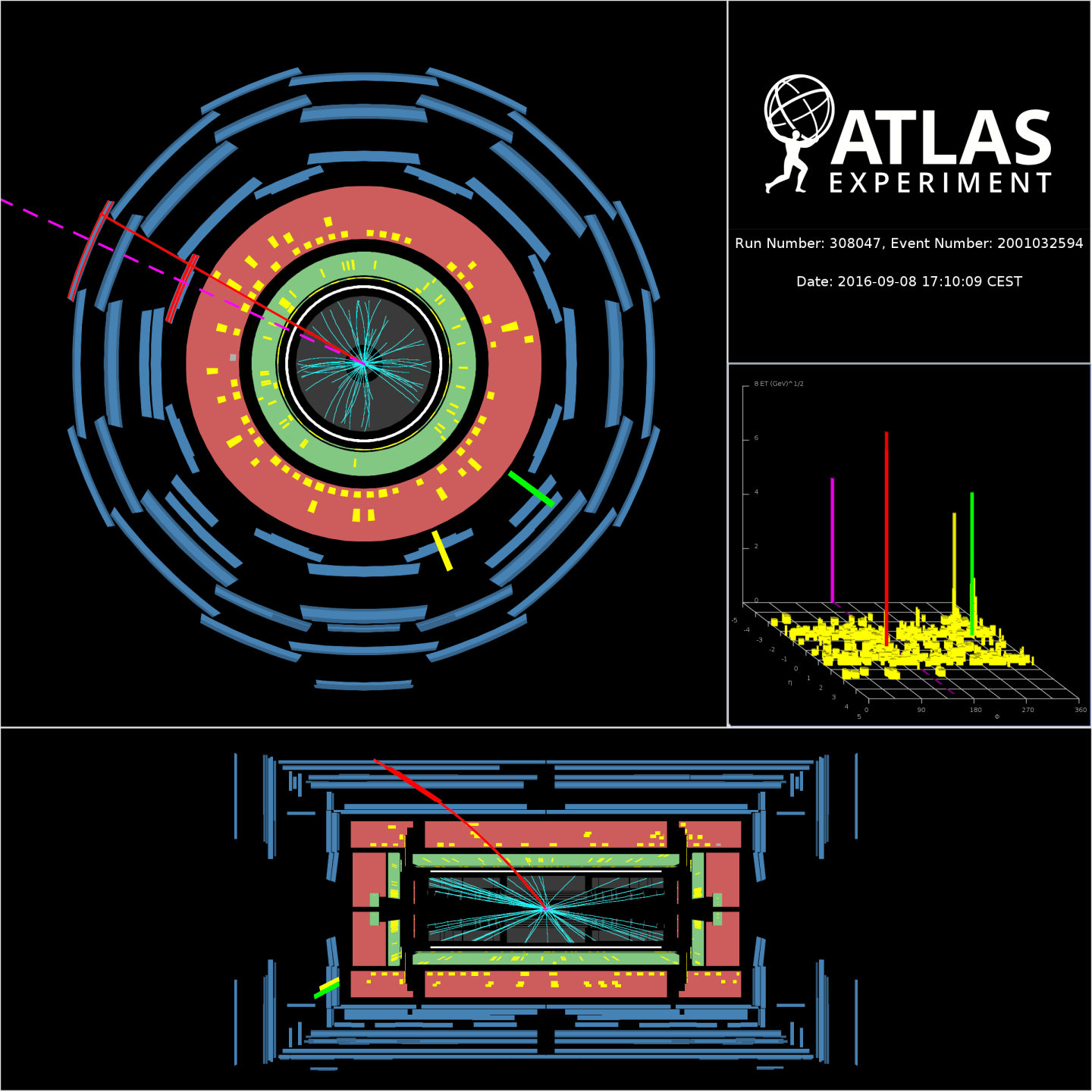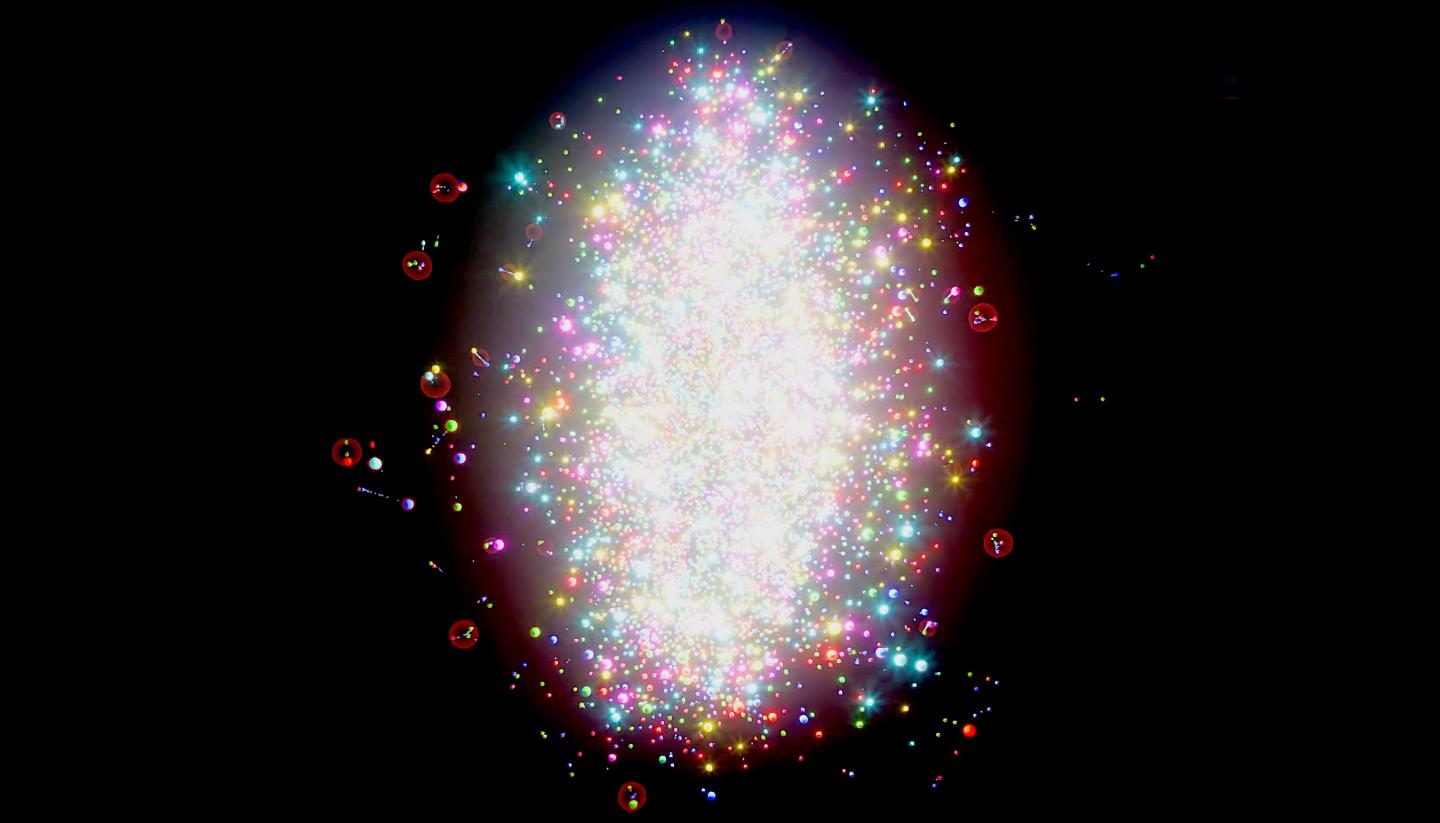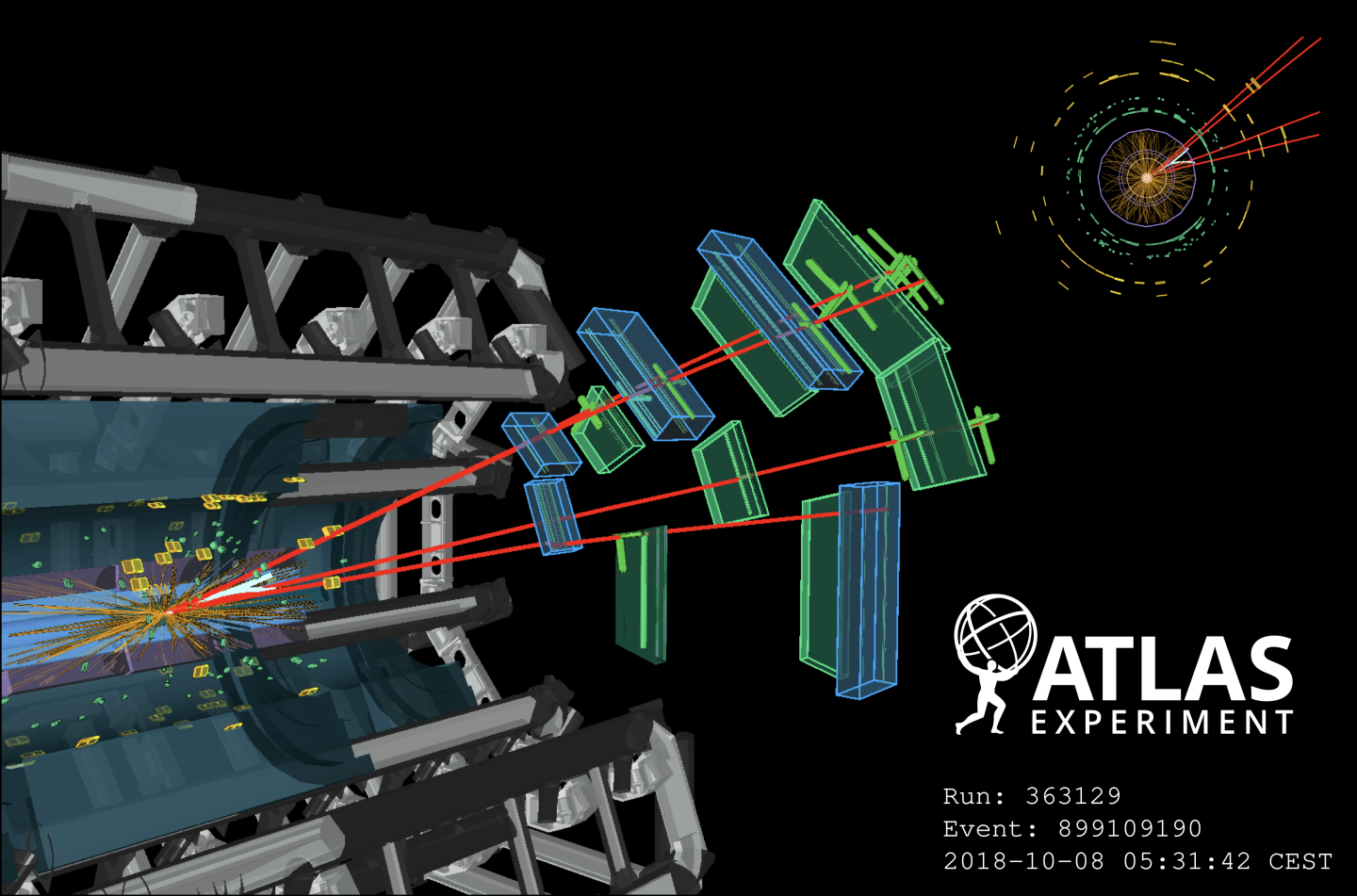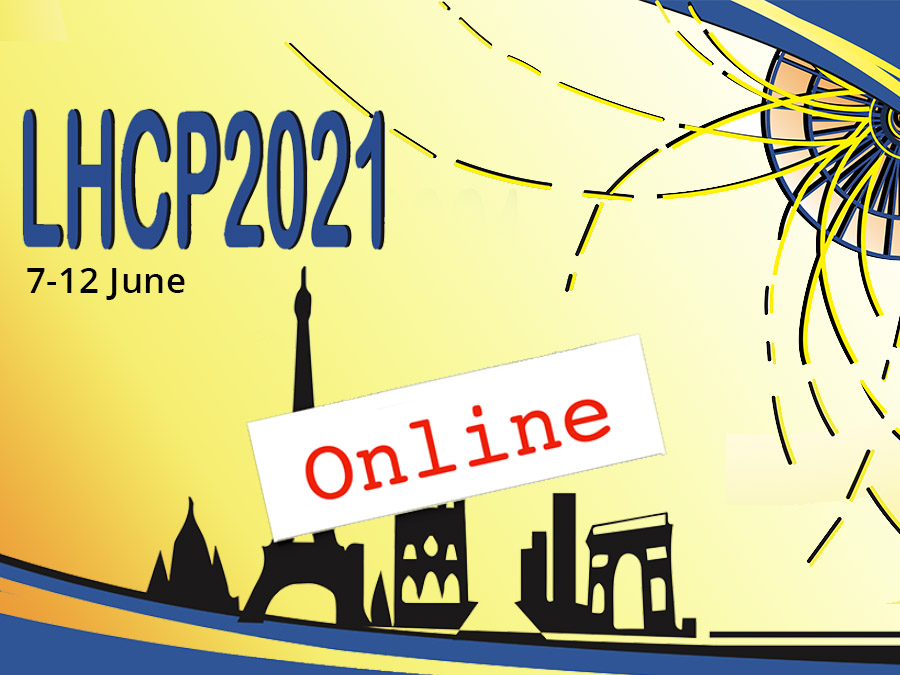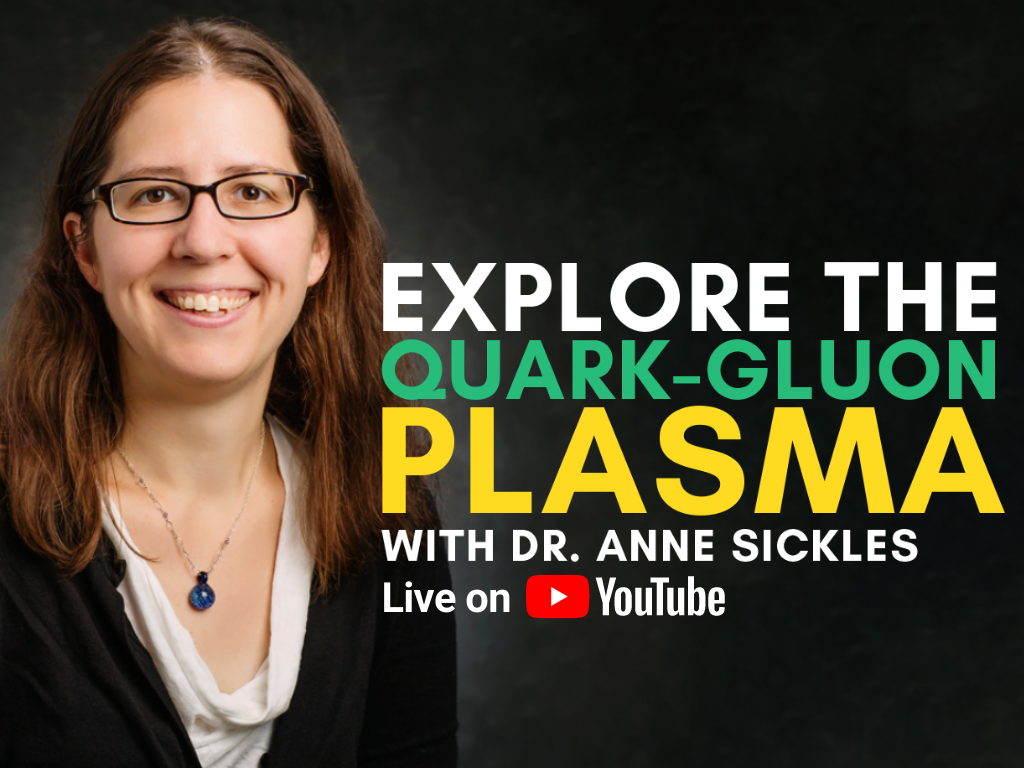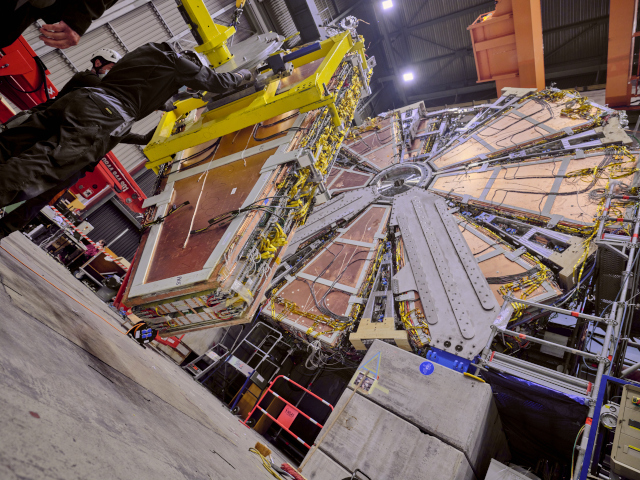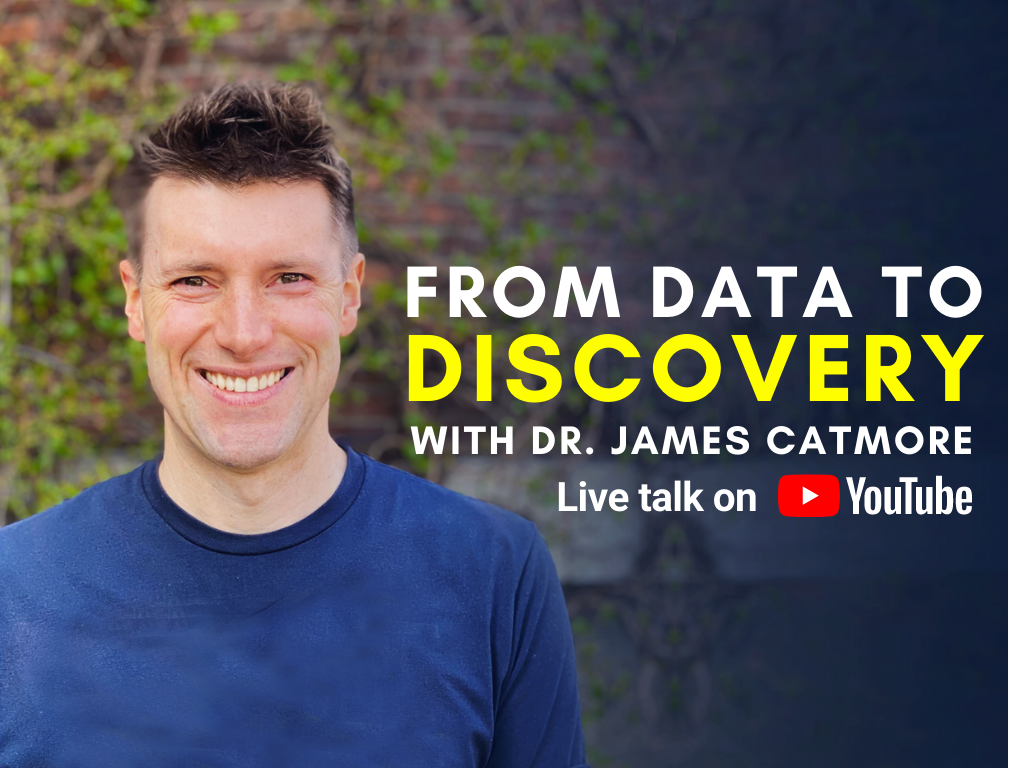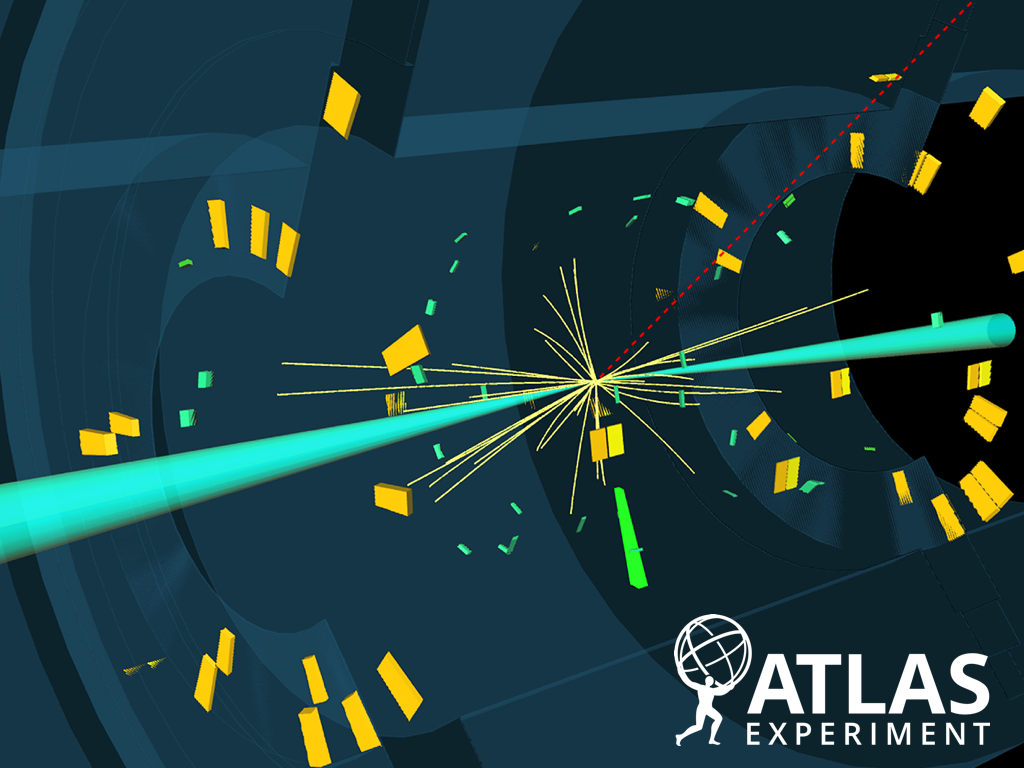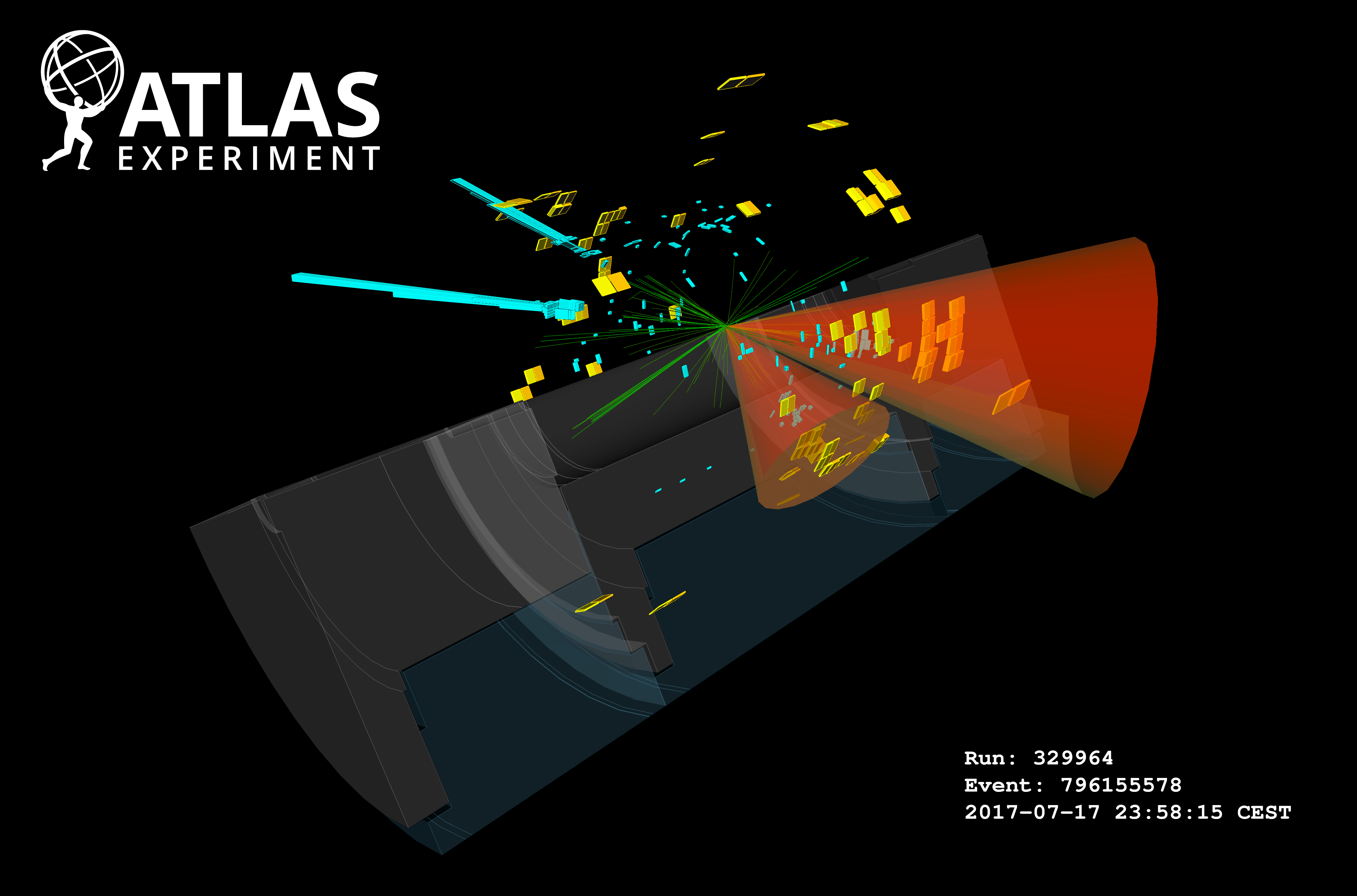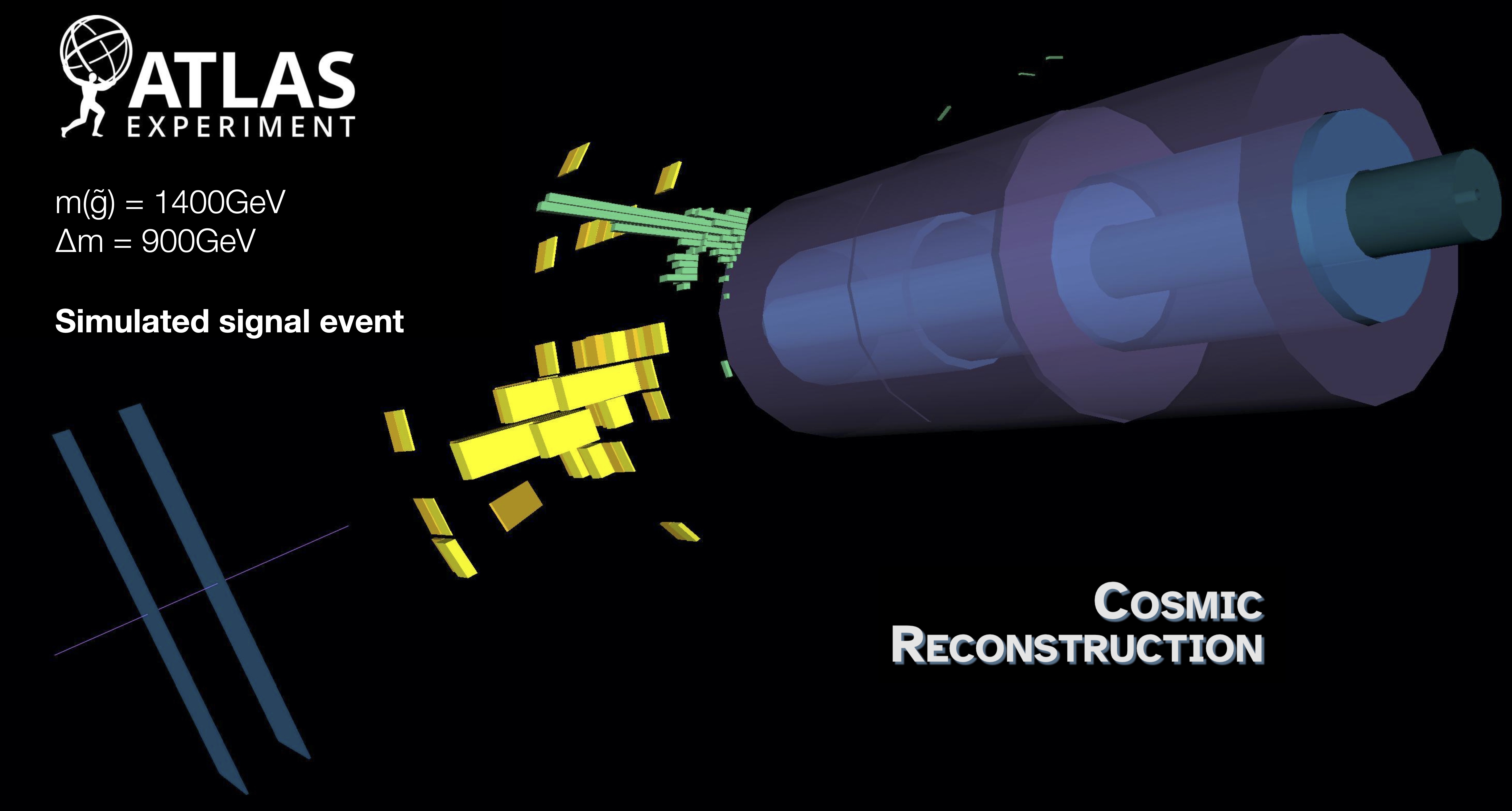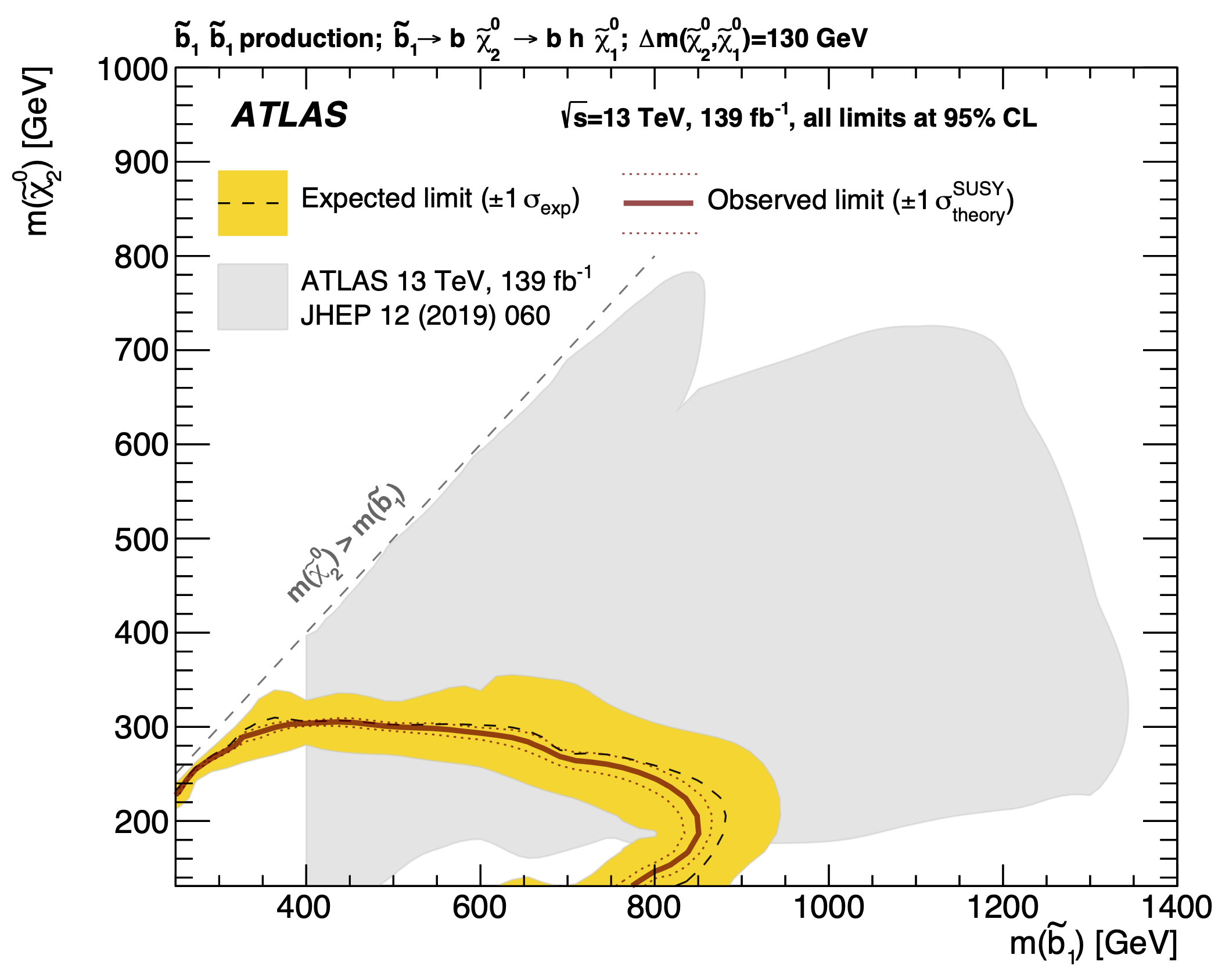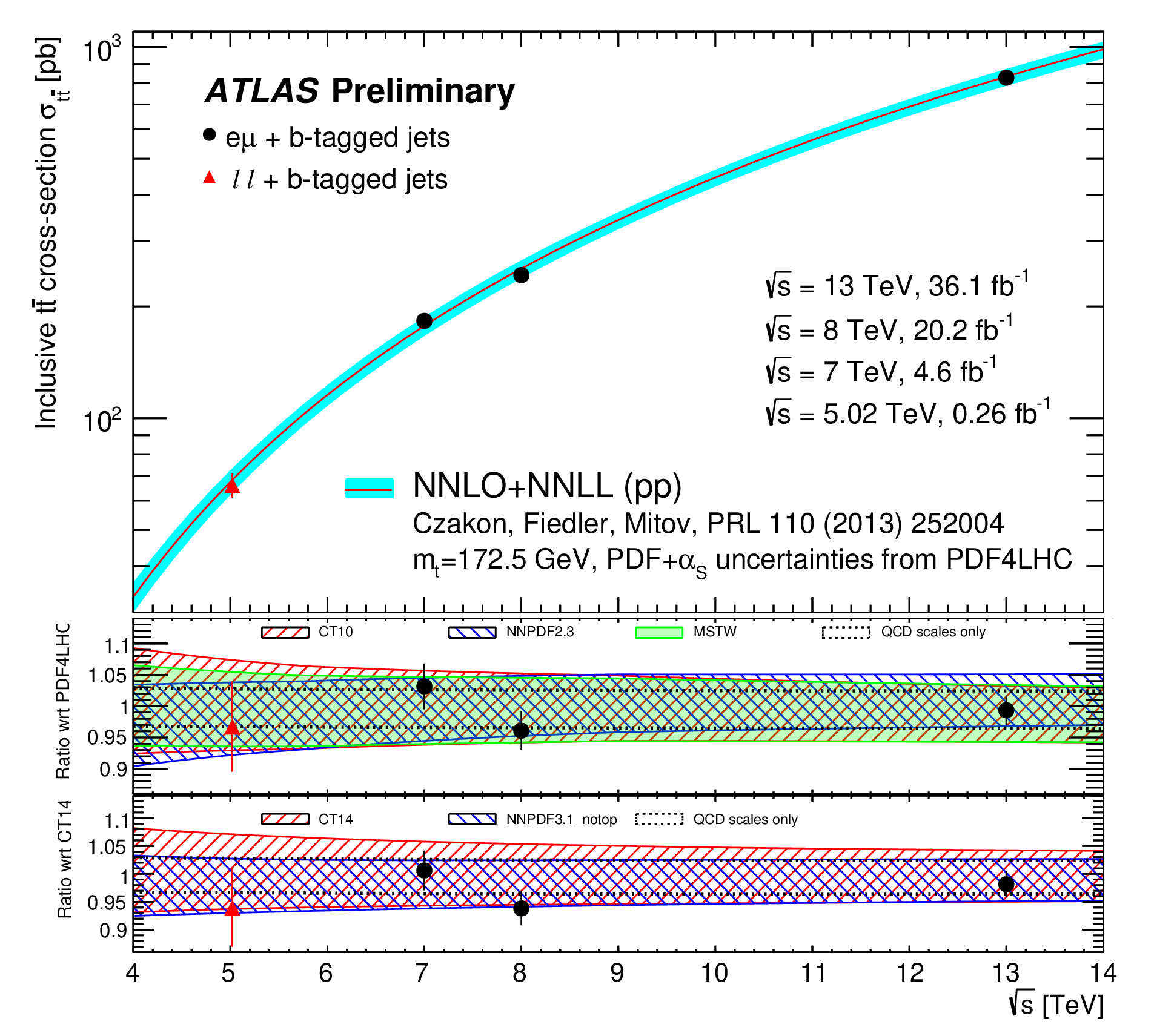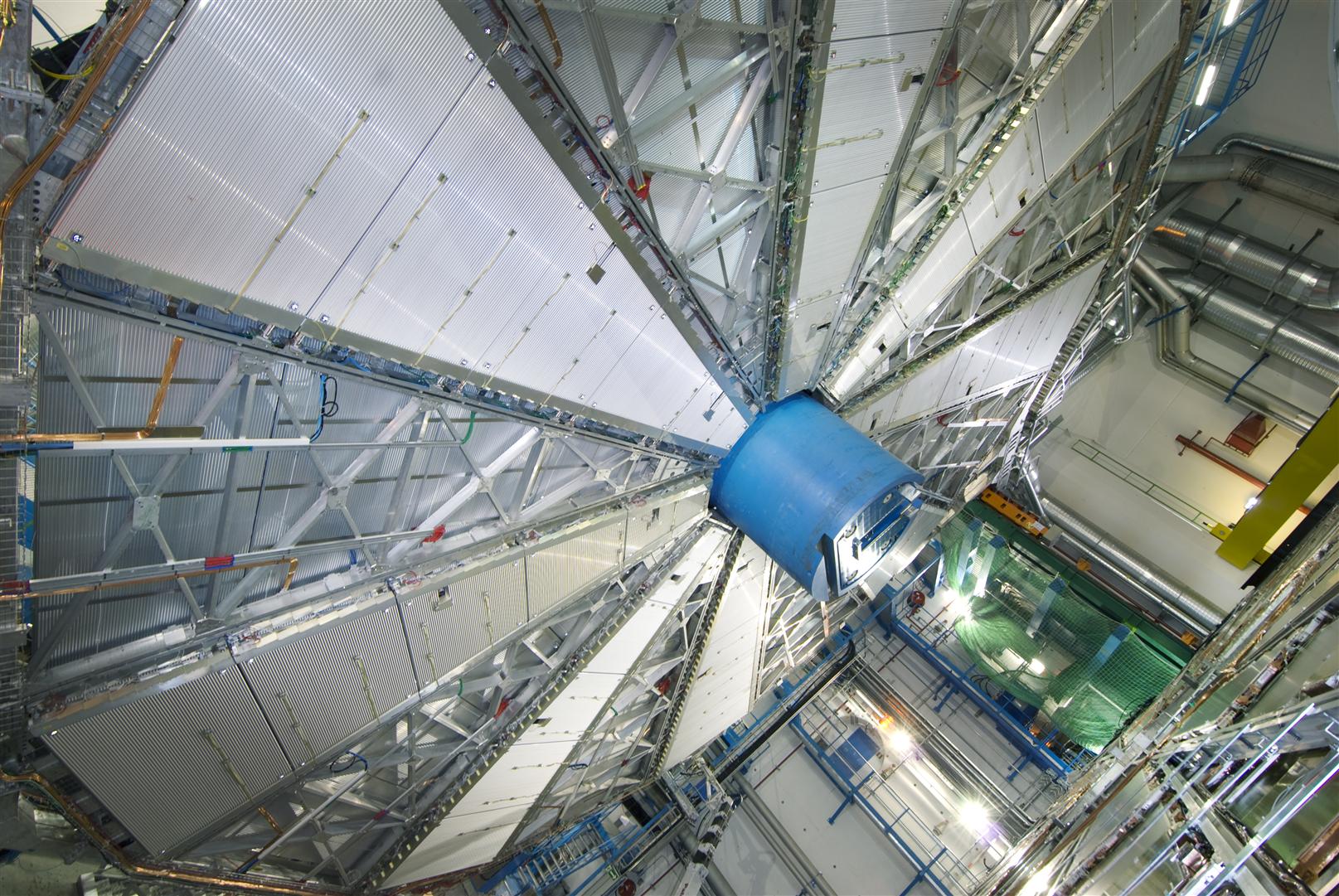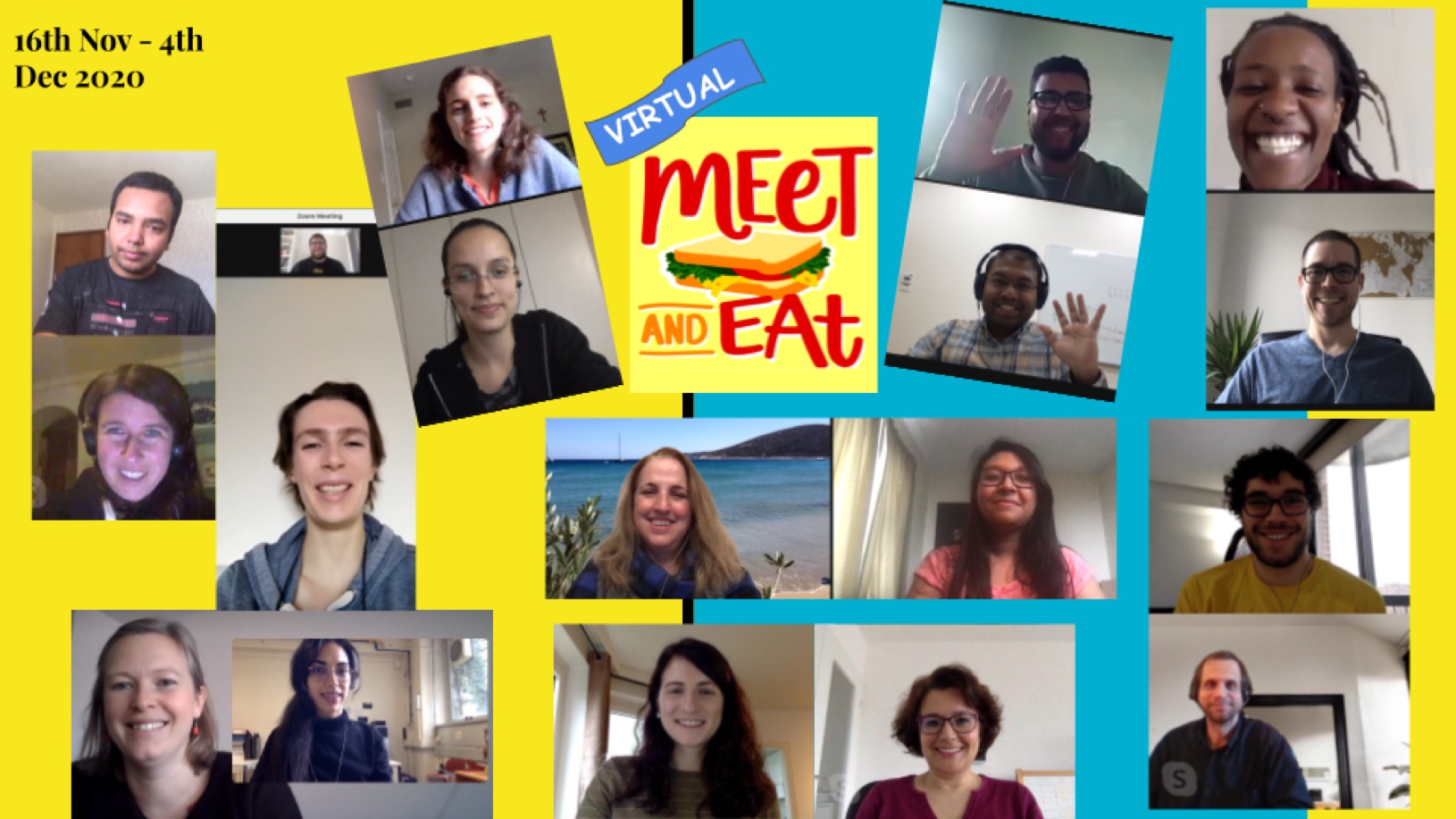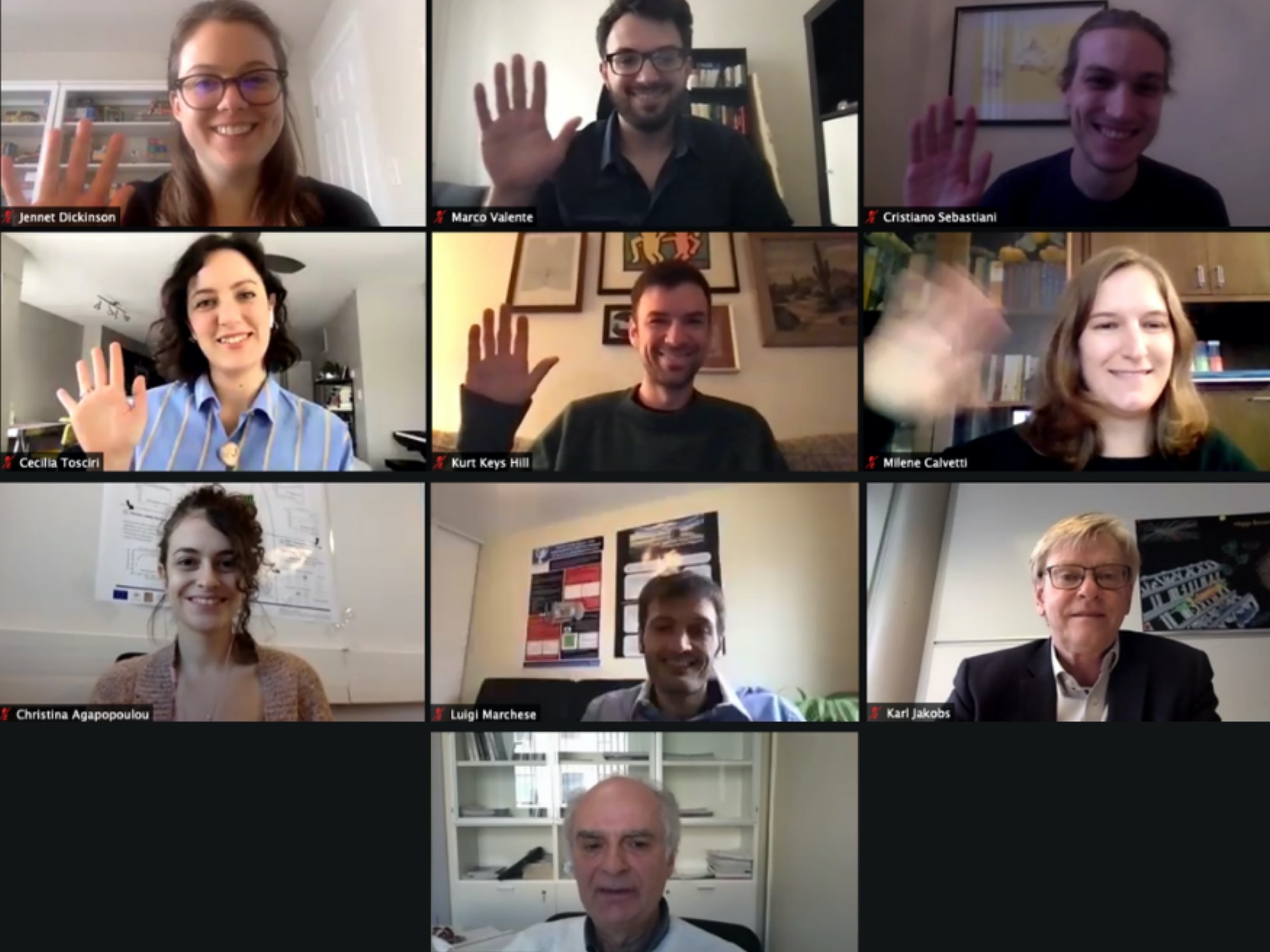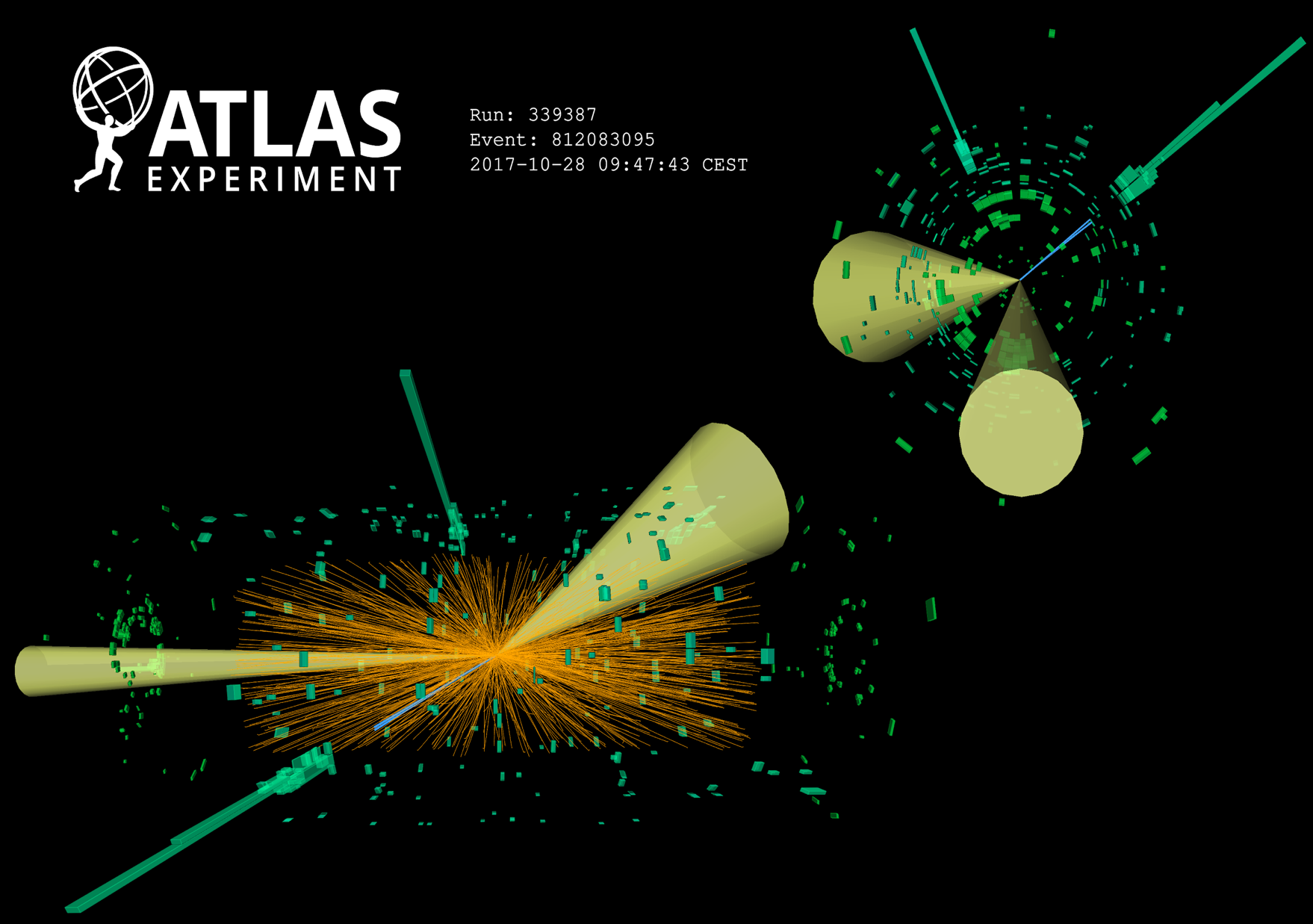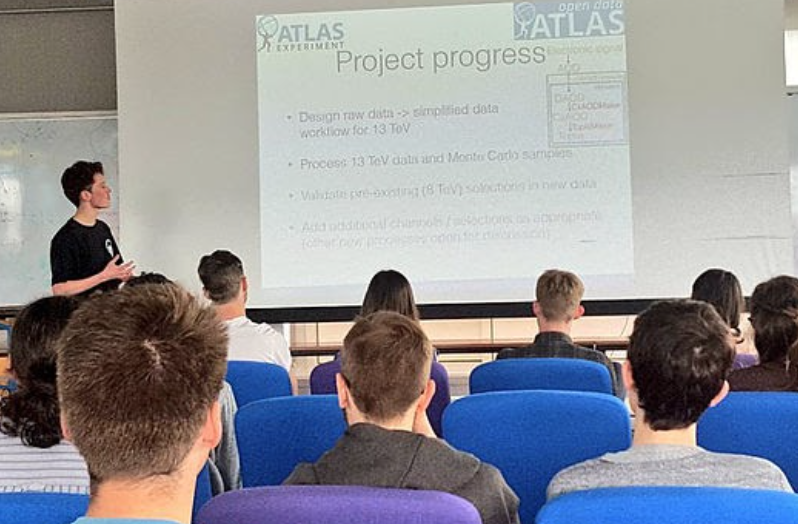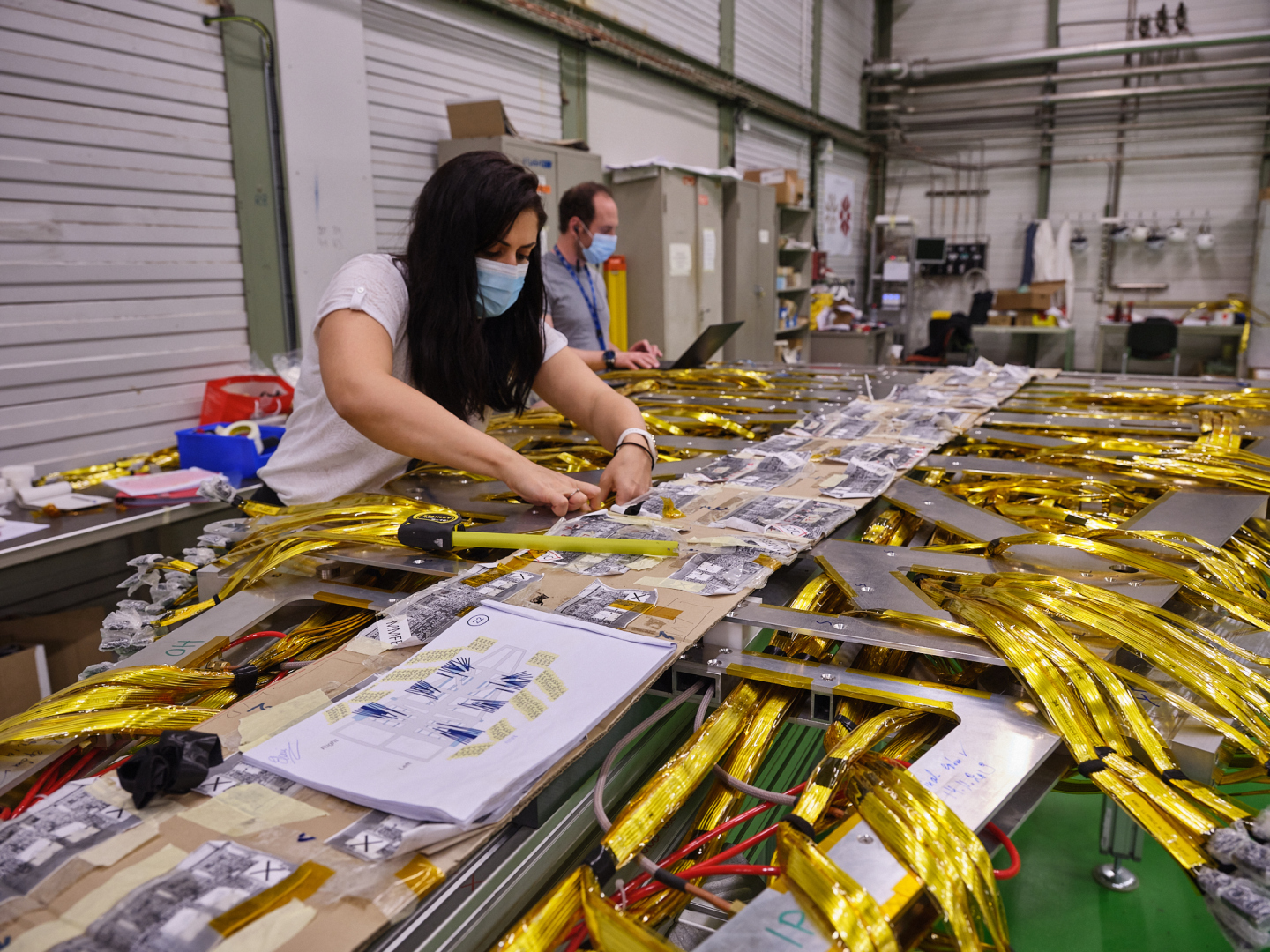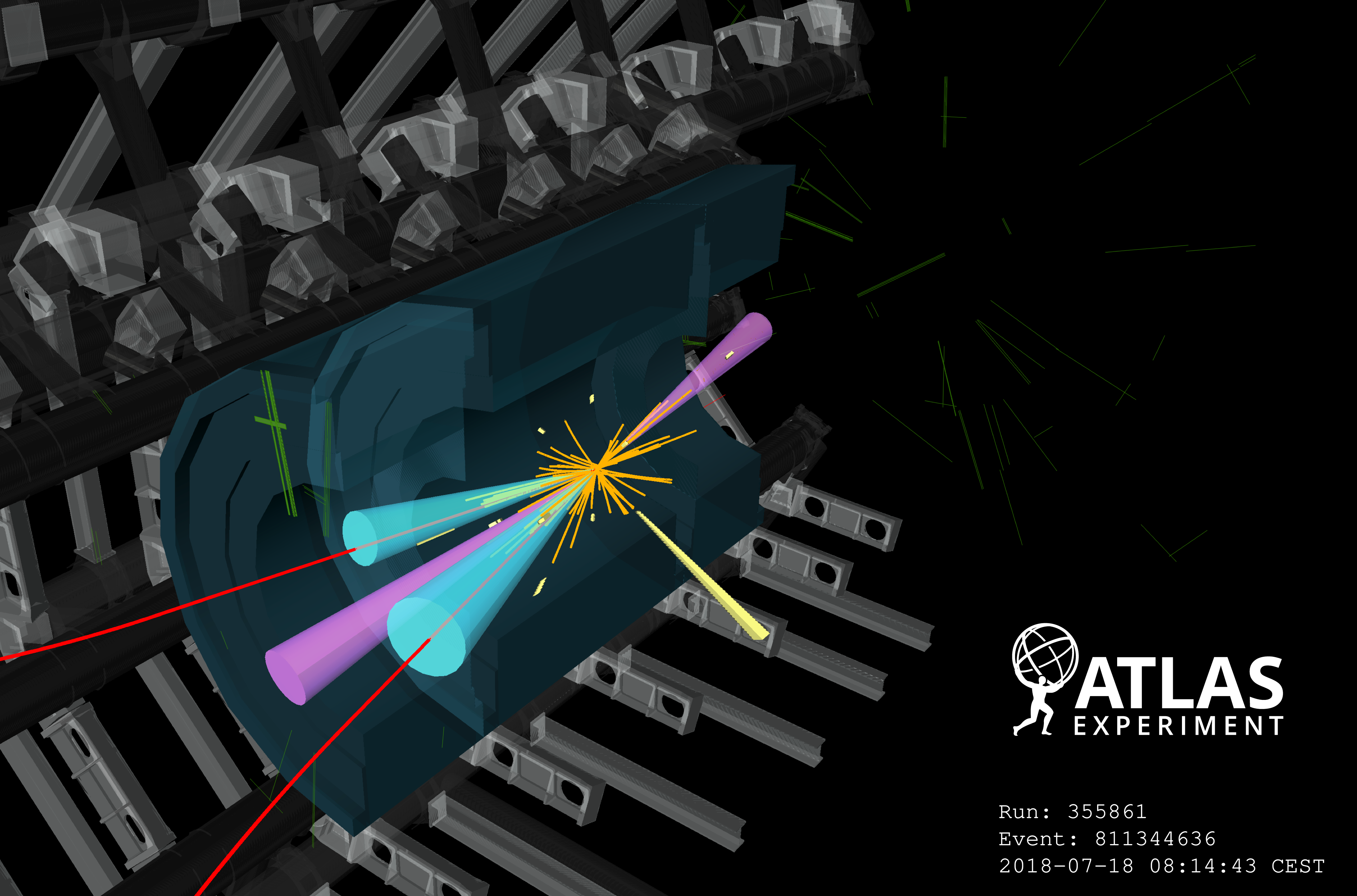Summary of new ATLAS results from LHCP 2021
The ninth annual conference on Large Hadron Collider physics (LHCP 2021) begins today in video-conference rooms around the world.
News |
ATLAS Live talk: How to study matter at a trillion degrees with Dr. Anne Sickles
Soon after the Big Bang, the Universe was too hot for normal matter to exist. Instead, it was made up of an extremely hot liquid of quarks and gluons: the quark-gluon plasma (QGP). In this live talk, Dr. Anne Marie Sickles explains how physicists at the ATLAS experiment are studying the QGP and what they've have learned.
News |
First ATLAS New Small Wheel nears completion
On Friday 28 May 2021, teams of physicists and engineers installed the final "wedge" of the first ATLAS New Small Wheel detector. This was an important milestone for the Collaboration, in preparation for the wheel’s installation in the ATLAS cavern later this summer.
News |
ATLAS Live talk: From Data to Discovery with Dr. James Catmore
Making a scientific breakthrough in 2021 requires more than just a microscope – most scientists rely on powerful computers and ingenious software to carry out their research. In this live talk, Dr. James Catmore explains the advanced computing and software techniques used by the ATLAS Experiment.
News |
Supporting talented students with the ATLAS PhD Grant
On 13 April 2021, the recipients of this year's ATLAS PhD Grant were celebrated in an online ceremony. These talented and motivated students will receive 1.5 years of funding for their studies at CERN, giving them the opportunity to enhance their doctoral studies in a one-of-a-kind research environment.
News |
In conversation with John Rutherfoord, a leading designer of the ATLAS Calorimeter
John P. Rutherfoord is a professor at the University of Arizona and a long-standing member of the ATLAS Collaboration. His extensive career has taken him from searching for the Upsilon particle at Fermilab to CERN to leading the design and development of the ATLAS Forward Calorimeter.
Portrait |
Building community in virtual events
Since 2017, the ATLAS Early Career Scientist Board (ECSB) and Analysis Software Tutorial organisers have been teaming up to run a week-long introductory event for new ATLAS members. Induction Day welcomes new members to the collaboration by giving them an overview of the plethora of activities that take place within the ATLAS Collaboration.
Blog |
ATLAS highlights from the Moriond 2021 conferences
The ATLAS Collaboration presented a host of brand-new results at Moriond spanning a broad range of subjects, from further tests of the Standard Model to searches for new phenomena motivated by as-yet unresolved mysteries of particle physics.
News |
Twice the Higgs, twice the challenge
In the post-Higgs discovery era, scientists at the Large Hadron Collider (LHC) have been hard at work studying the Higgs boson’s properties. One property that remains to be experimentally verified is whether the Higgs boson can couple to itself (self-coupling).
ATLAS finds further confirmation of evidence for four top quark process
In a new result released this week, the ATLAS Collaboration studied the production of four top quarks at once in LHC collisions. This is the heaviest particle final state ever seen at the LHC, and provides physicists with a unique opportunity to study the top quark’s relationship to the Higgs boson.
Better late than never: ATLAS searches for late-decaying new particles
A new result from the ATLAS Collaboration – debuted at the virtual Moriond Electroweak conference – sets itself apart from more traditional LHC searches. Typically, physicists will look for new particles produced in LHC collisions that immediately decay to known or invisible particles. This analysis, in contrast, looks for new particles that live for roughly a hundred nanoseconds or more before decaying.
Deeper insight into Higgs boson production using W bosons
The Higgs boson reveals its properties to the outside world twice: during production and decay. ATLAS’ new result studies the Higgs boson at both of these moments, looking at its production via two different methods and its subsequent decay into two W bosons.
Summary of new ATLAS results from Moriond 2021
Since 1966, Les Rencontres de Moriond has united experimentalists and theorists for weeks of scientific discussion. 2021 is no exception – but instead of in-person chats over coffee in La Thuile (Italy), physicists will be sharing their new findings in online meetings.
News |
The supersymmetric bottom quark and its friends
The special status of the top and bottom quarks makes them key players in the search for phenomena not foreseen by the Standard Model. New ATLAS results set strong constraints on the production of supersymmetric bottom quarks and of possible dark-matter particles.
Studying top quarks at high and not-so-high energies
CERN’s Large Hadron Collider (LHC) is famous for colliding protons at world-record energies – but sometimes it pays to dial down the energy and see what happens under less extreme conditions.
The power of position: aligning the ATLAS muon spectrometer
In new results released this week, ATLAS physicists describe novel techniques used to accurately align the muon spectrometer.
ATLAS: now under new management
The ATLAS Collaboration welcomes new management this month, with Andreas Hoecker (CERN) taking the lead as Spokesperson for the experiment.
News |
Planning an event during a pandemic
At the ATLAS Early Career Scientist Board (ECSB), we have also had to adapt in order to best represent and assist the early career scientists in our collaboration. One of the biggest changes was moving all of our events in the second half of 2020 to be entirely virtual.
Blog |
Students step into the limelight: ATLAS awards excellent PhD theses
ATLAS PhD students are a key cohort of the Collaboration, making unique and crucial contributions to the experiment while working on their degree. Every year, their work is celebrated in the context of the ATLAS Thesis Awards.
News |
ATLAS recognises the outstanding achievements of Collaboration members
The 2020 ATLAS Outstanding Achievement Awards ceremony was held online on 11 February 2021. Established in 2014, the awards recognise outstanding contributions in support of the ATLAS experiment, covering all areas except physics analysis.
News |
ATLAS finds evidence of a rare Higgs boson Dalitz decay to two leptons and a photon
ATLAS finds first evidence of the Higgs boson decaying to two leptons and a photon. This is one of the rarest Higgs boson decays yet seen at the LHC, with striking features that presented unique challenges for the ATLAS experiment.
Teaching university students with real ATLAS data
ATLAS PhD student Meirin Oan Evans explores how the University of Sussex is incorporating ATLAS Open Data into their teaching – and shares his experience using this incredible resource.
Blog |
2020: an unprecedented year in review
Despite the huge challenges of the COVID-19 pandemic, last year saw excellent successes for the ATLAS Collaboration, including first-of-a-kind physics results and great headway made on detector upgrades.
News |
Studying the Higgs boson in its most common – yet uncommonly challenging – decay channel
New results from the ATLAS Collaboration focus on different production modes of the Higgs boson decaying into b-quarks, capitalising on the power of machine learning to better discriminate this particular process from other proton collision events.
ATLAS Live talk: How elementary particles are detected with Prof. Daniela Bortoletto
Journey into the ATLAS Experiment! On Thursday 26th November, Prof. Daniela Bortoletto gave a live public talk on Youtube describing how particle detectors like ATLAS find elementary particles.
News |


